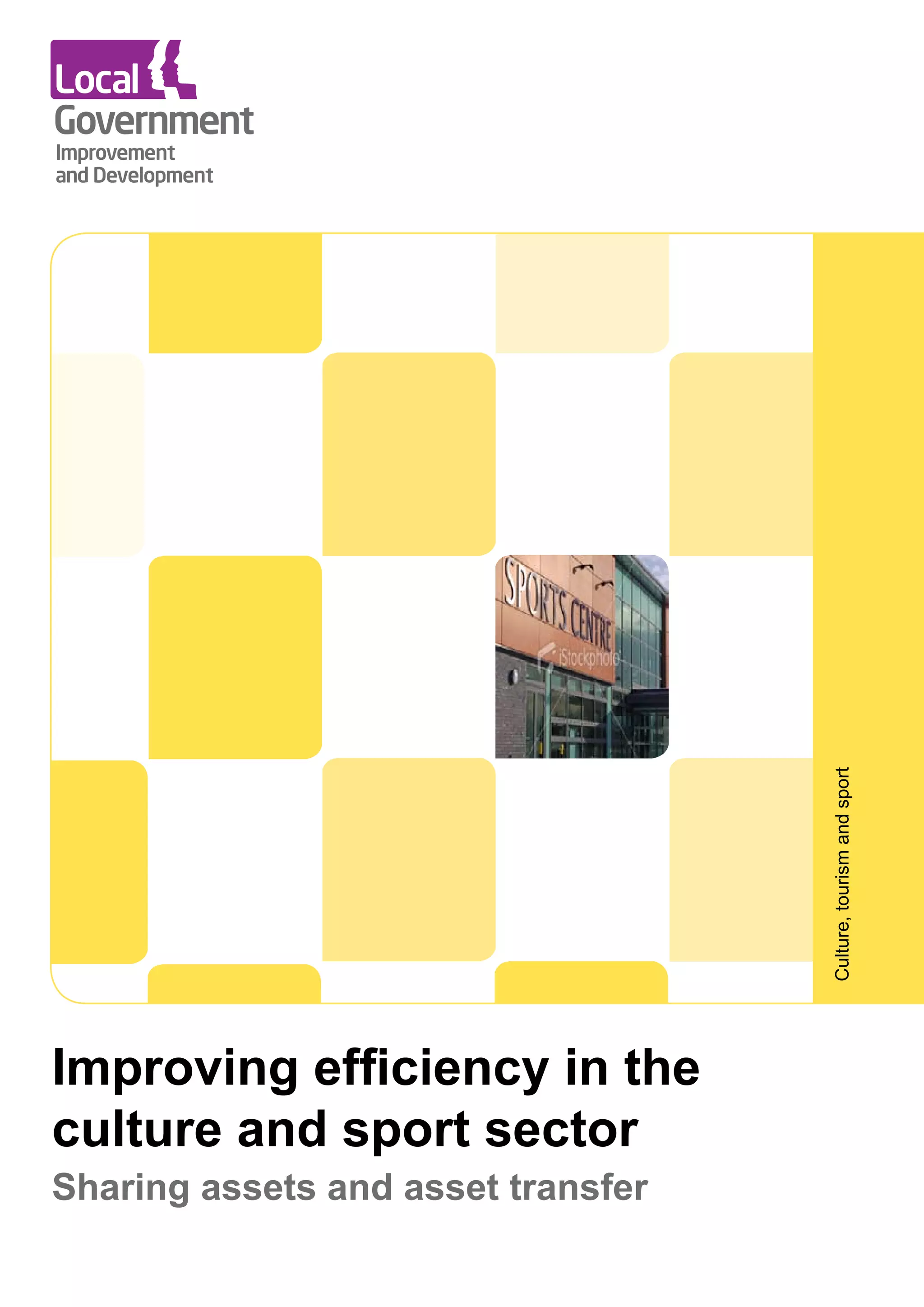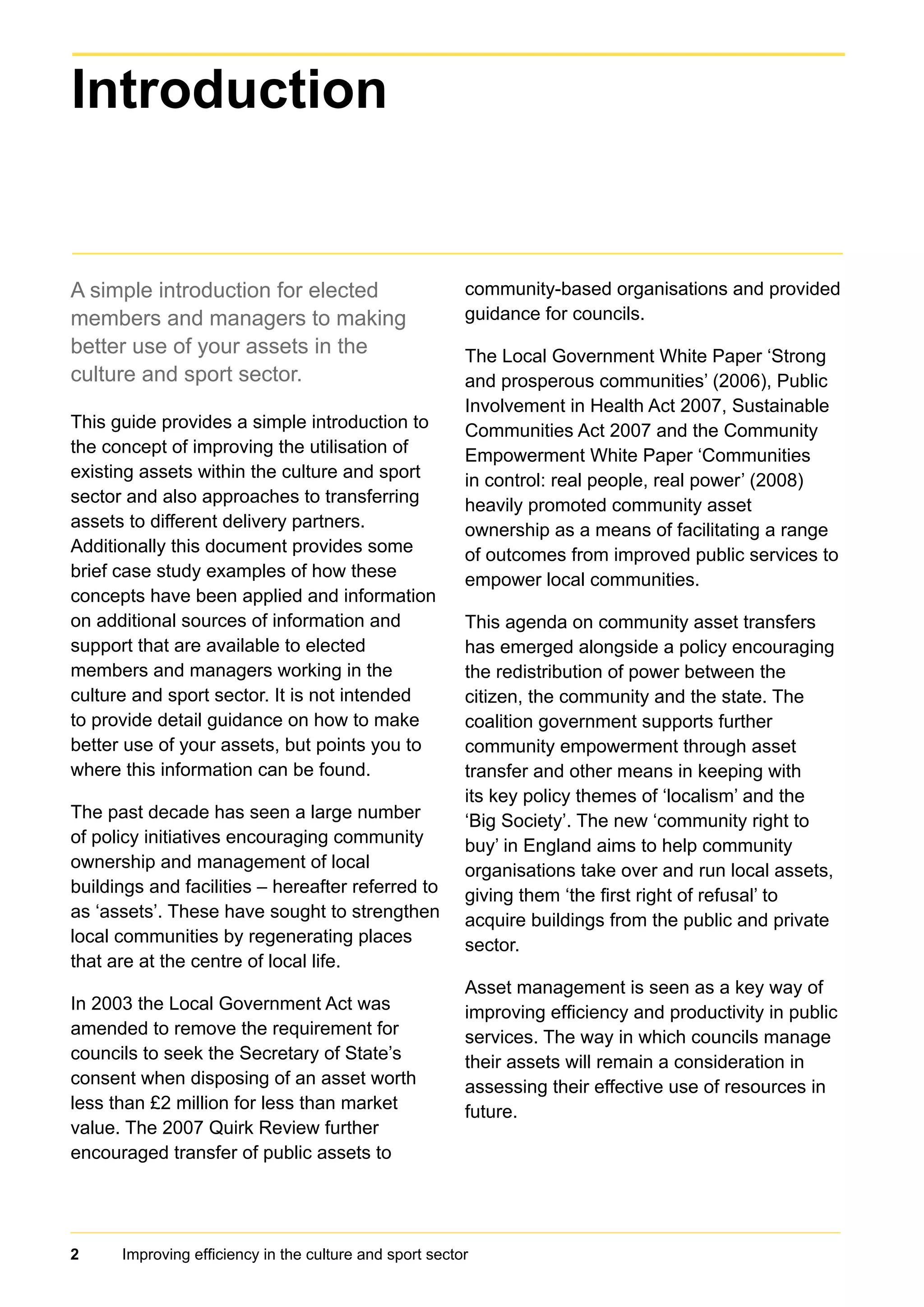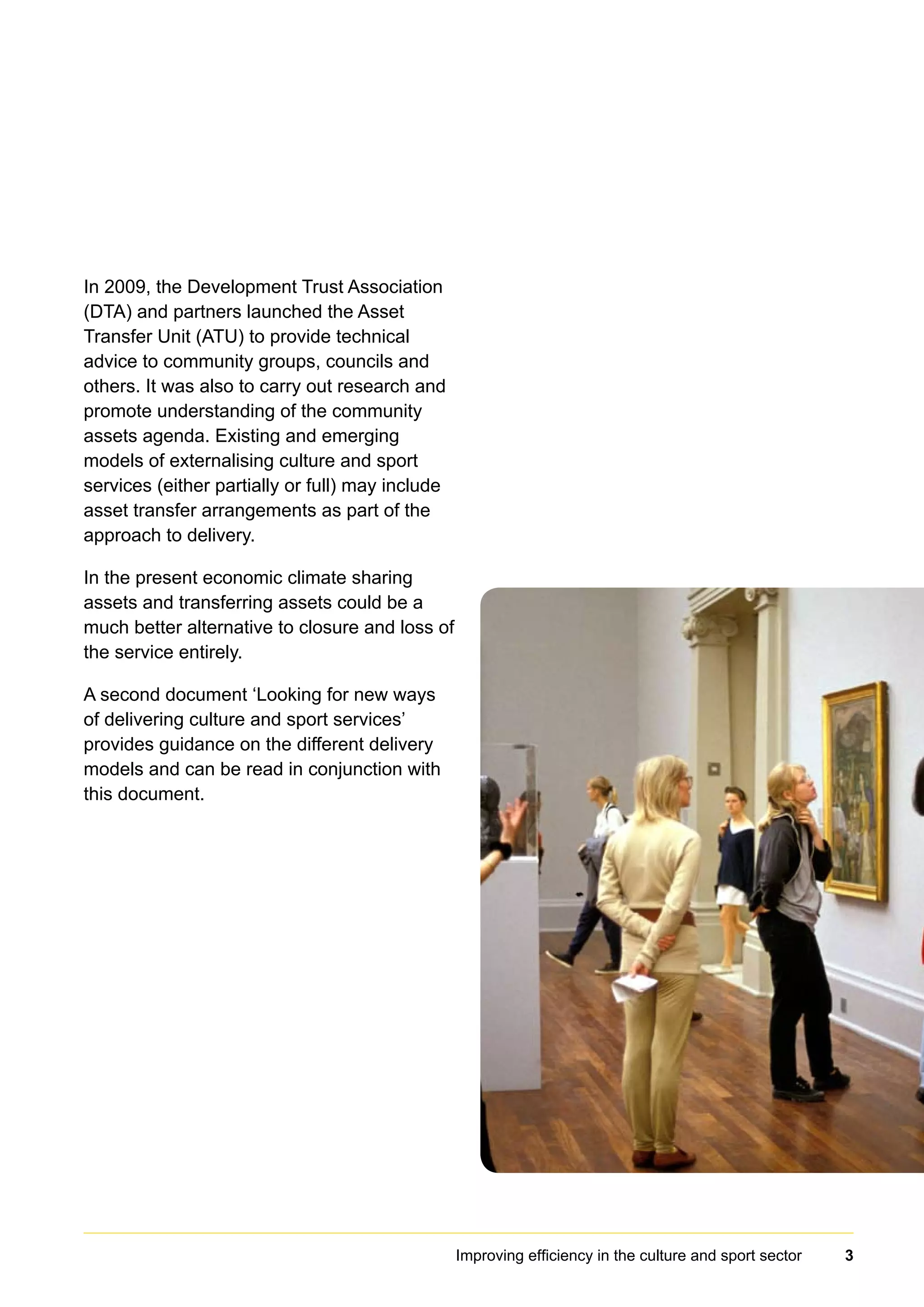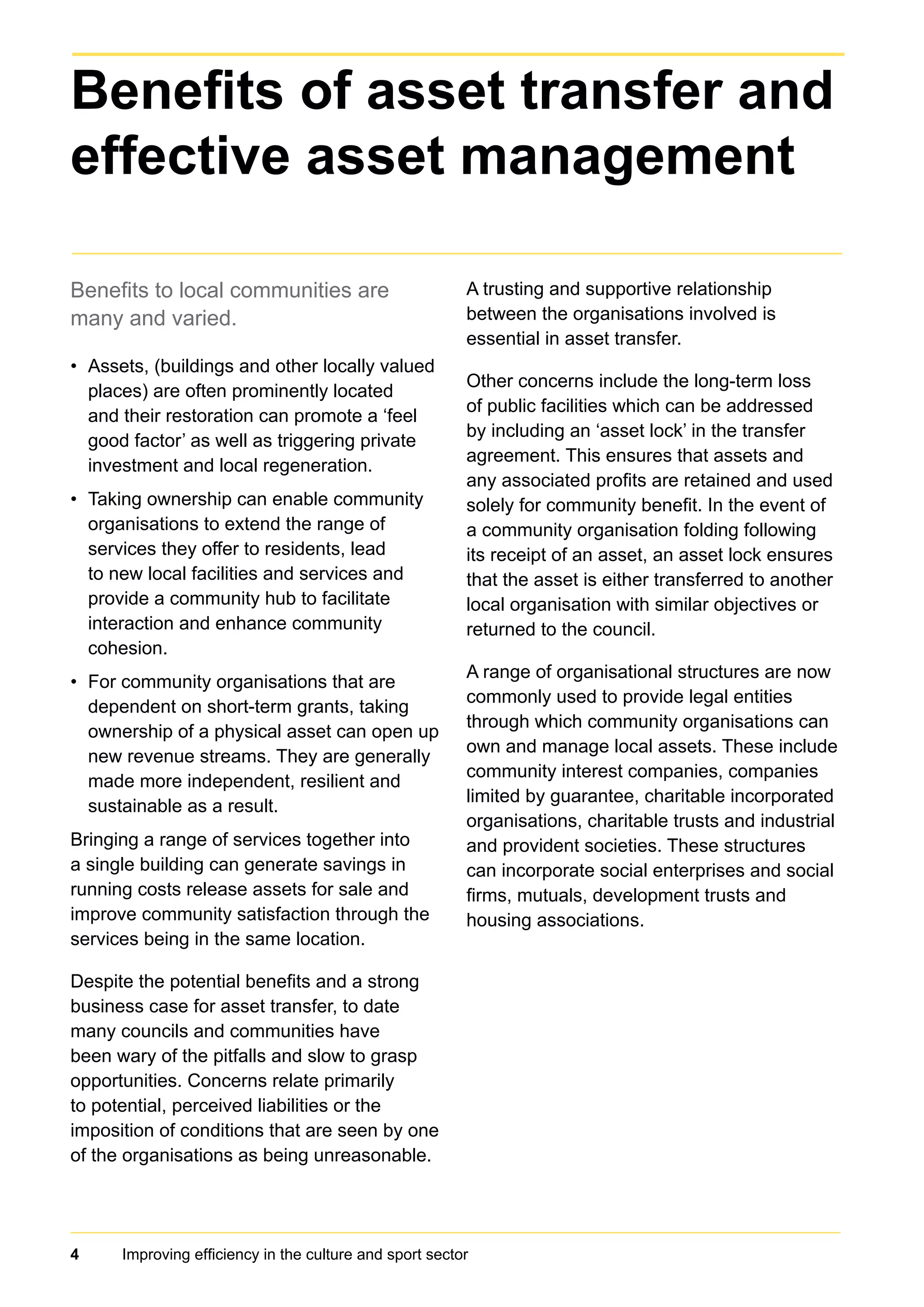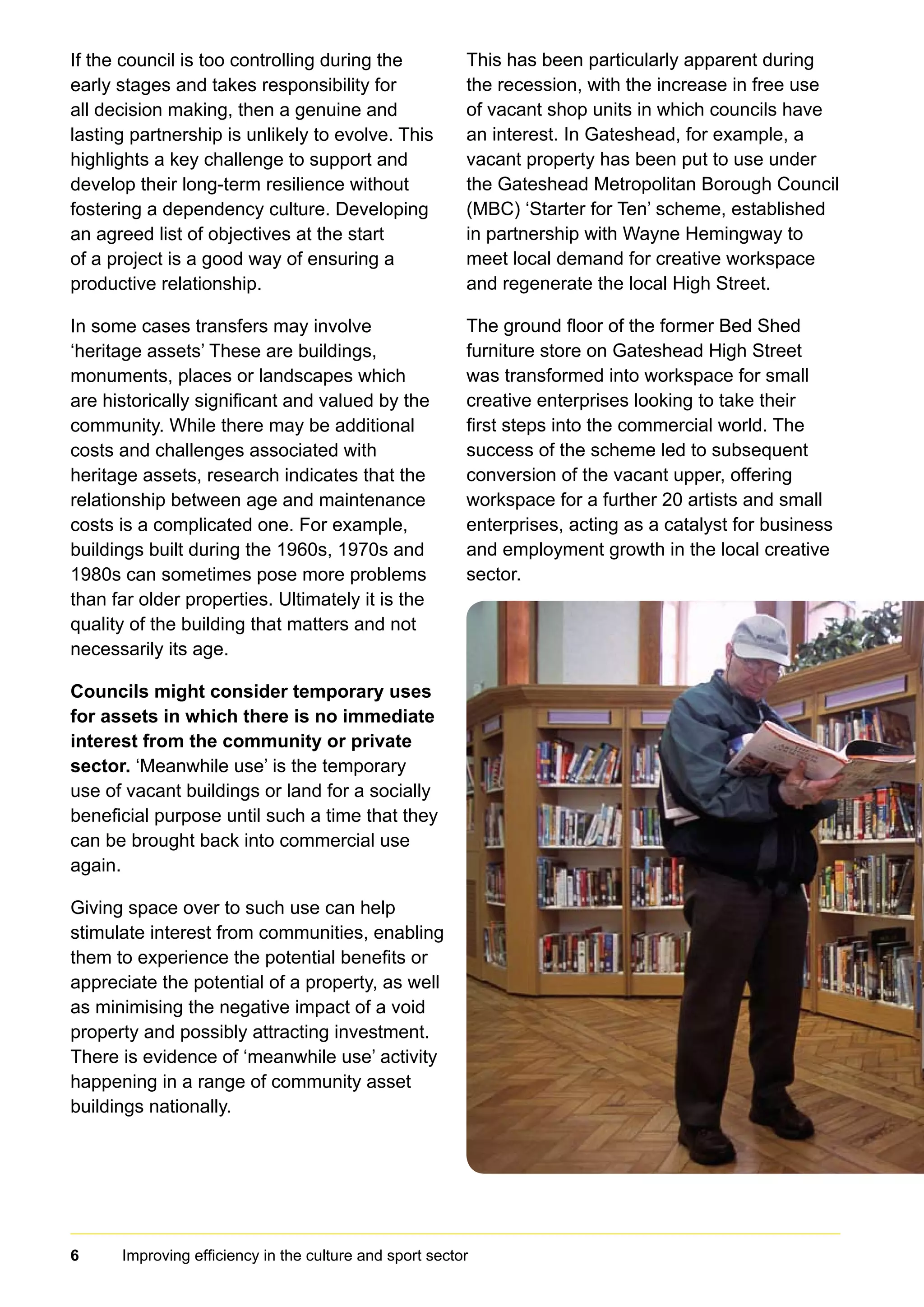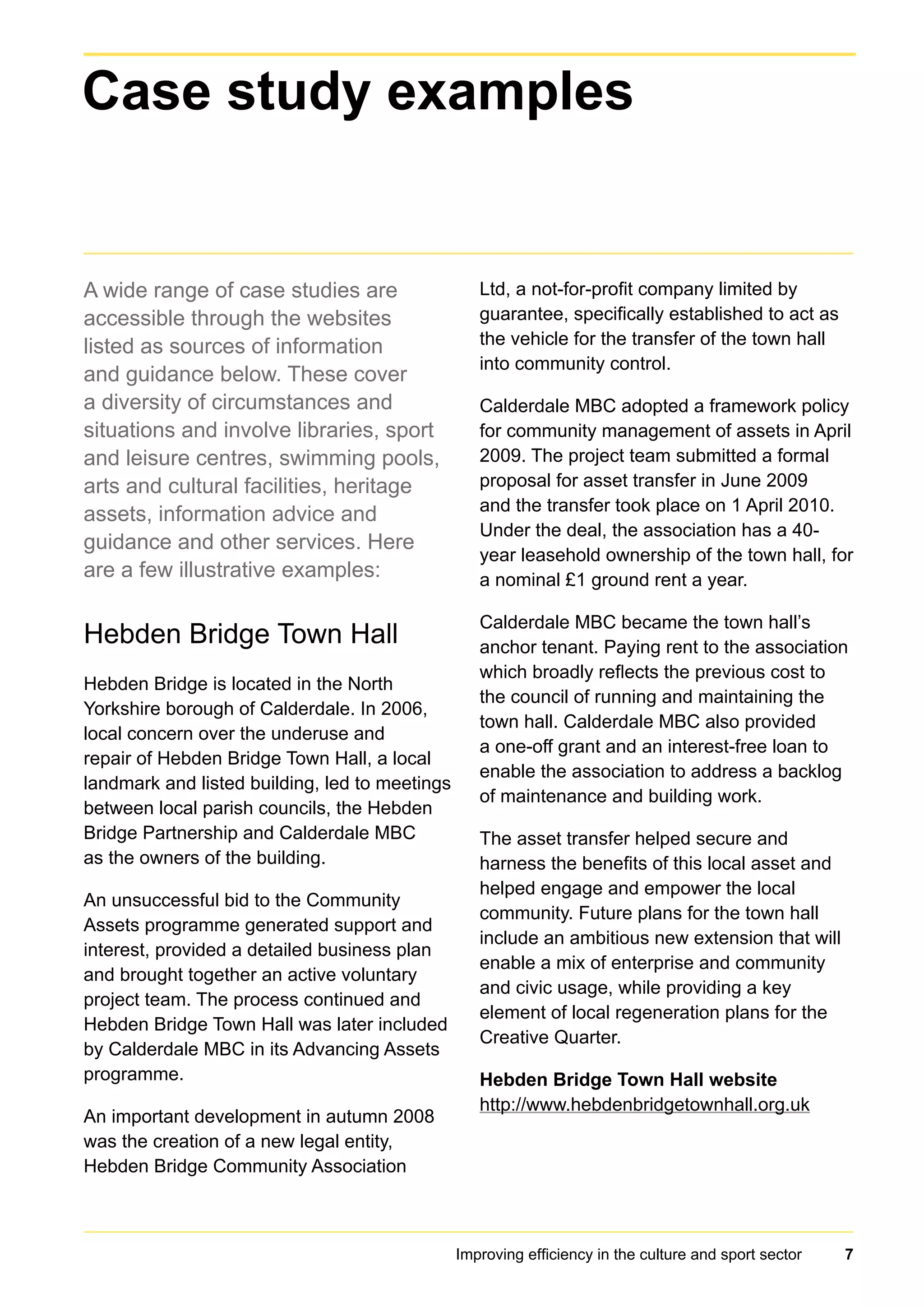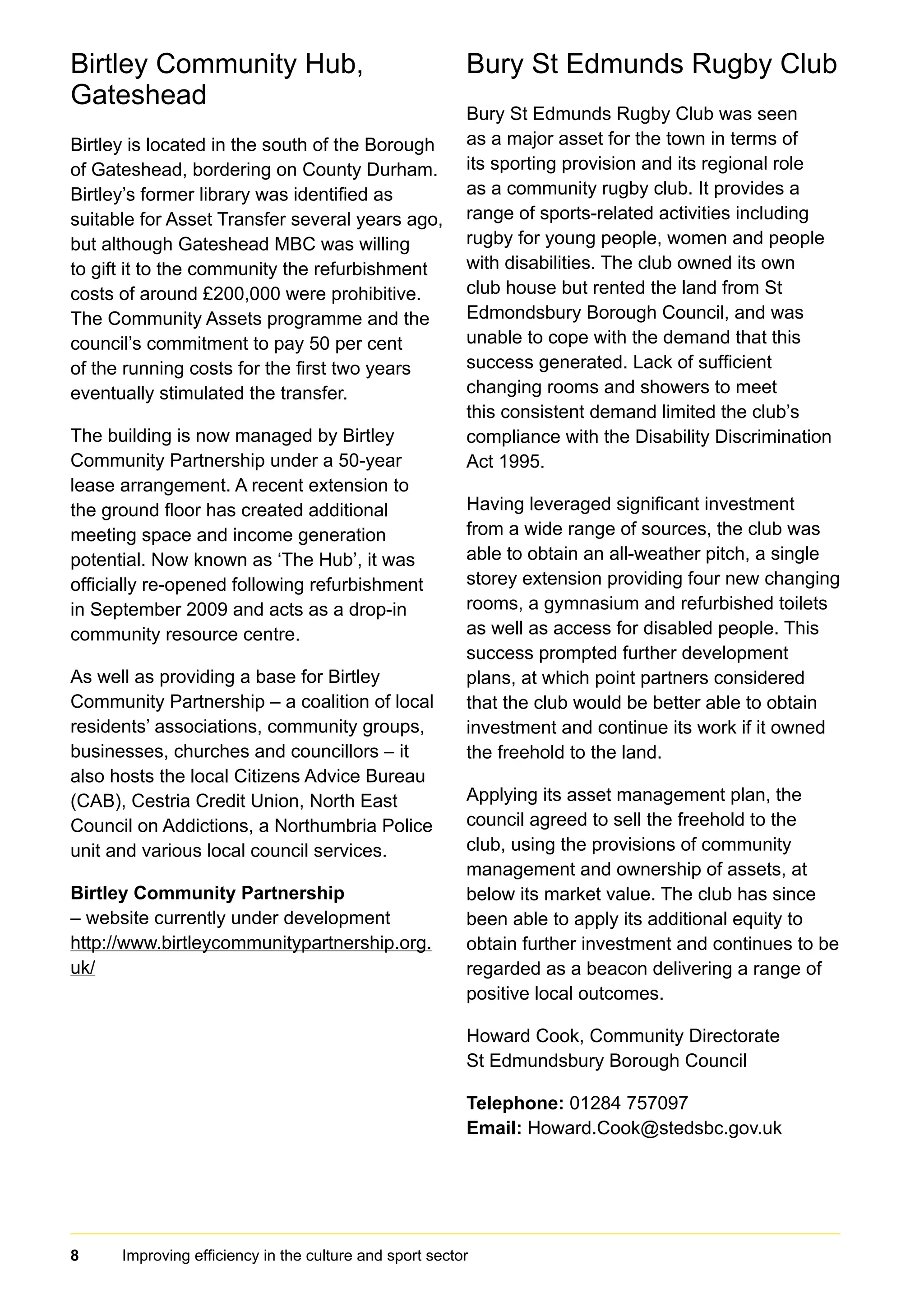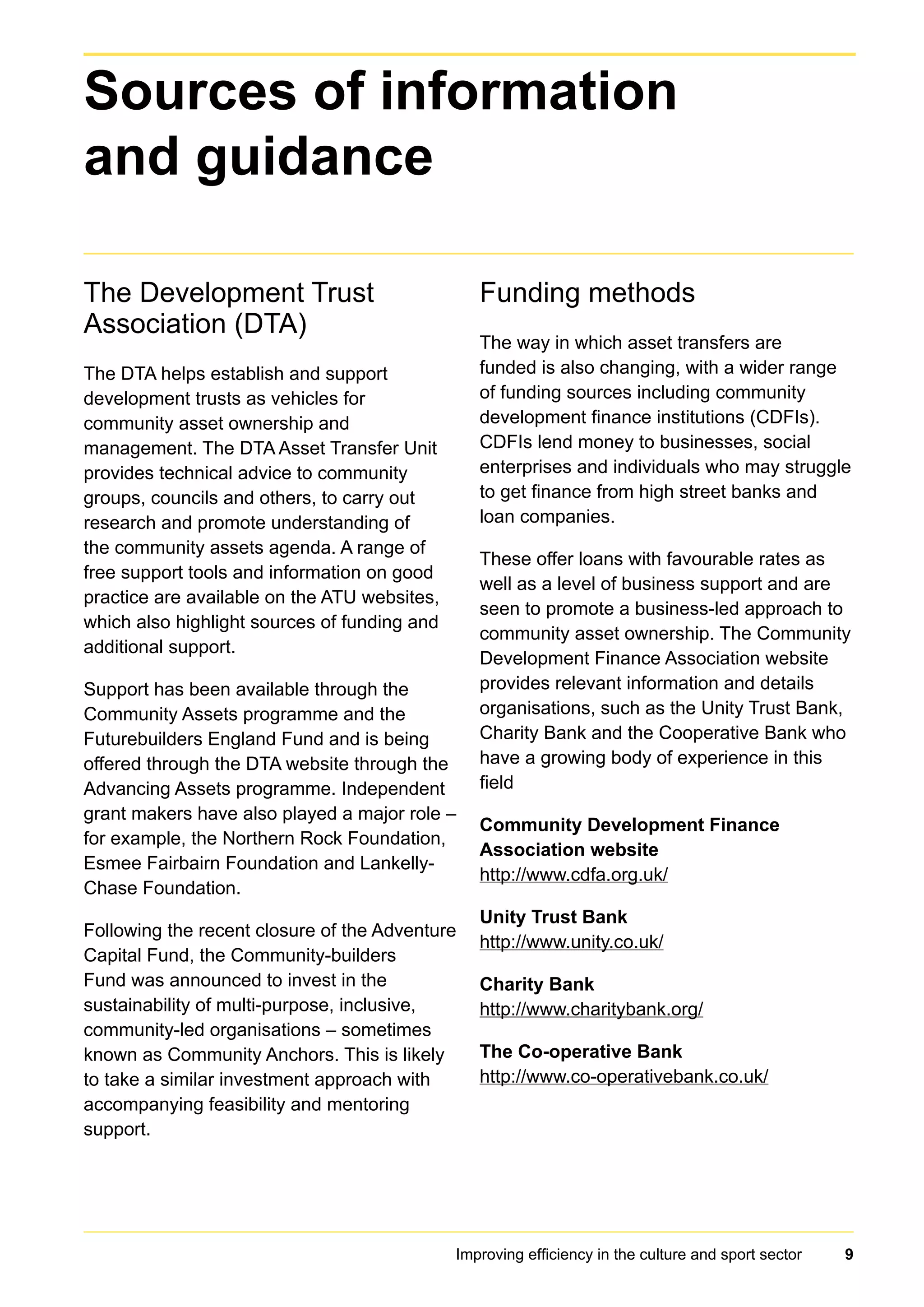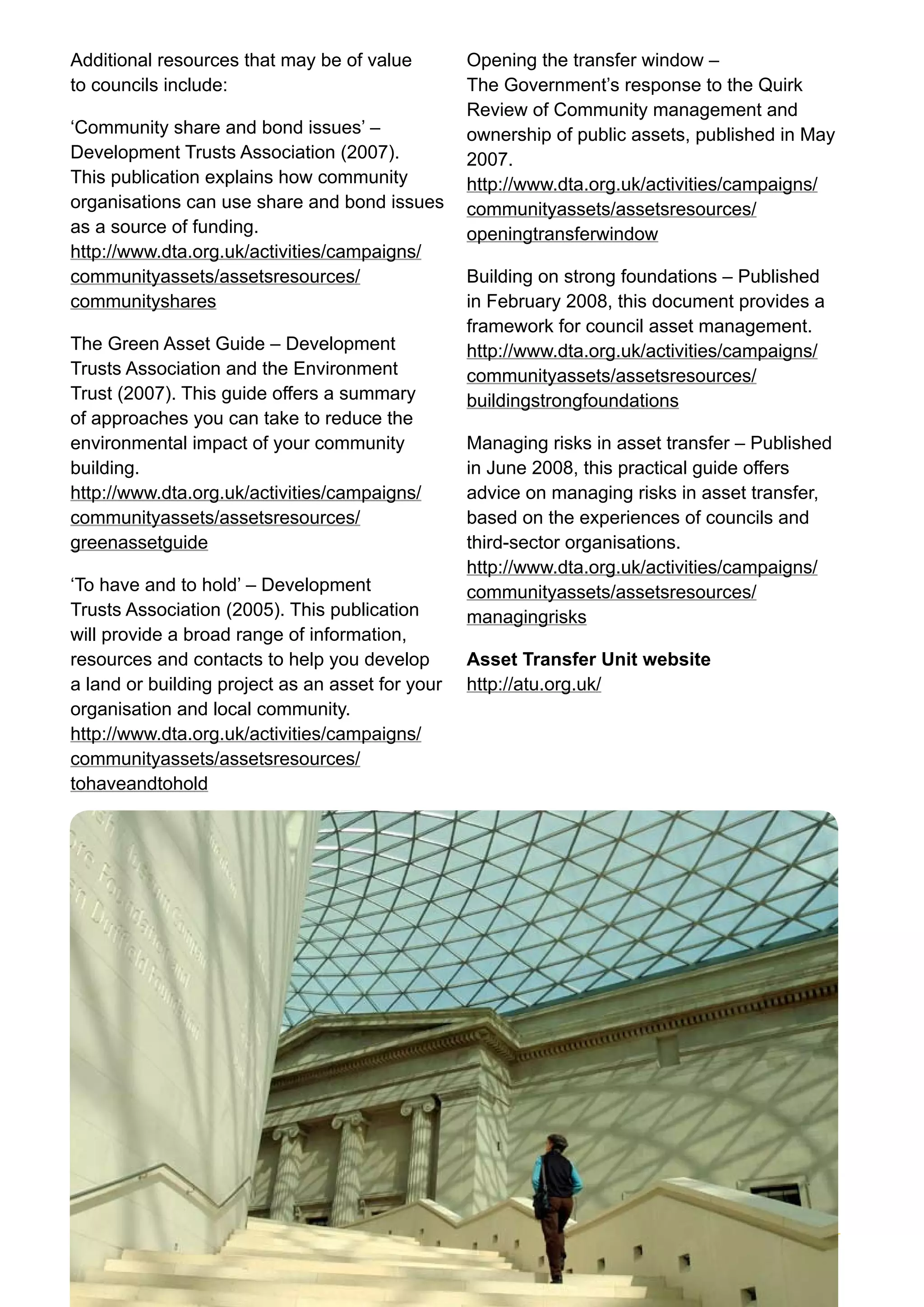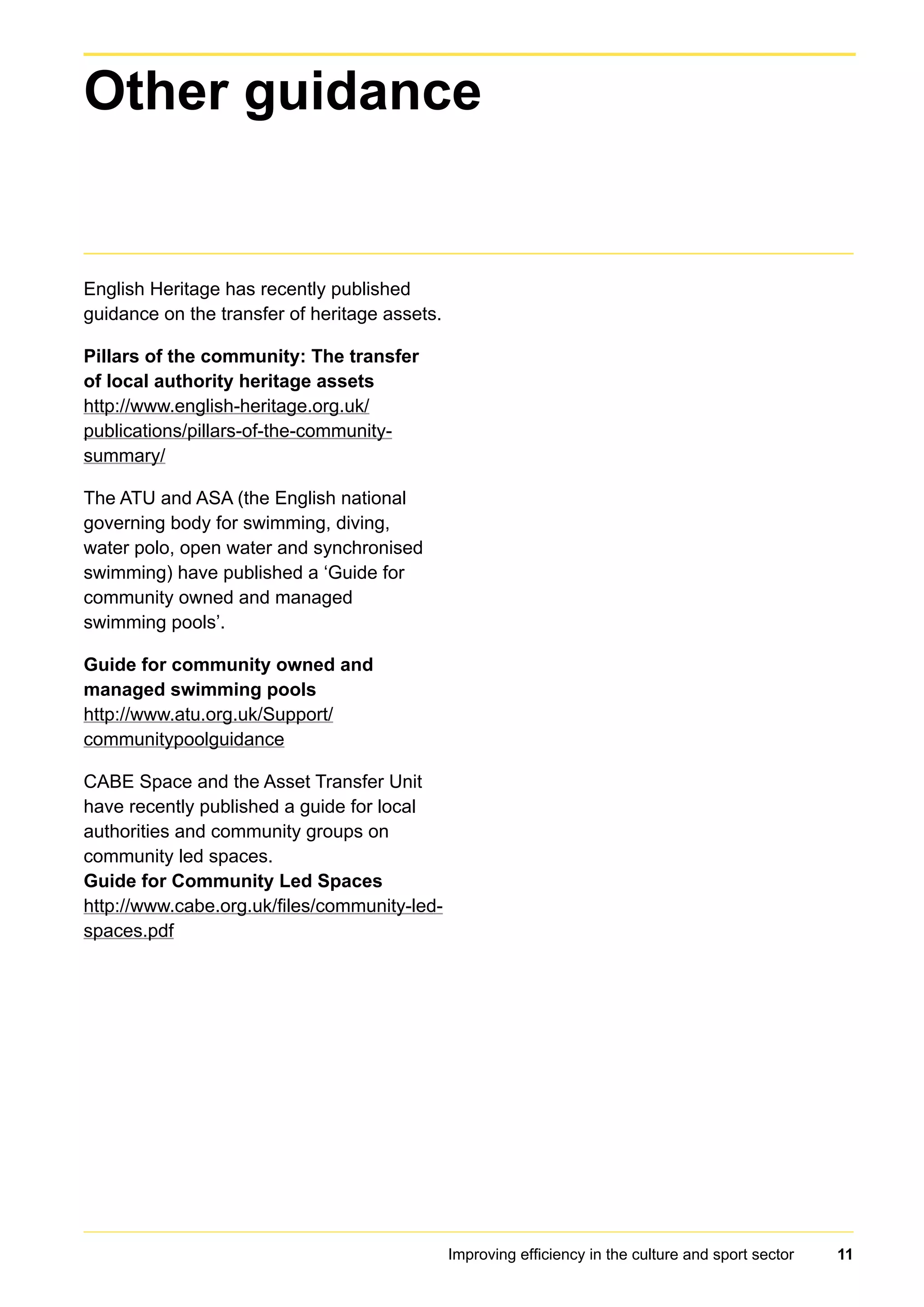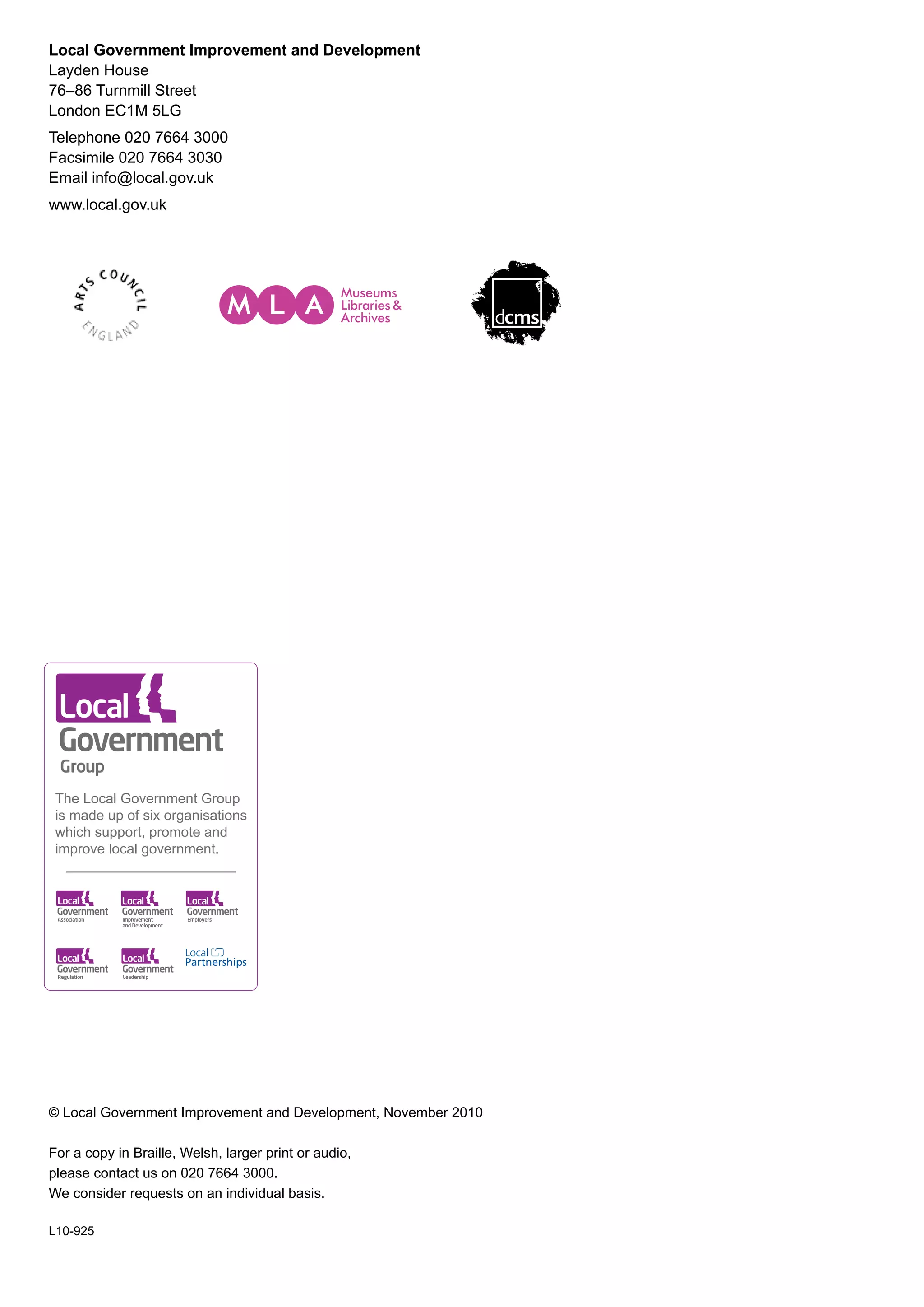This document provides a simple introduction to improving efficiency in the culture and sport sector through better utilization of existing assets and asset transfer to different delivery partners. It discusses how asset management and community asset transfers can strengthen communities and local services. Critical success factors for asset transfers include embracing the concept at a senior level, taking a strategic approach, establishing a comprehensive asset overview, involving the community, and ensuring genuine partnership between the community and council.
